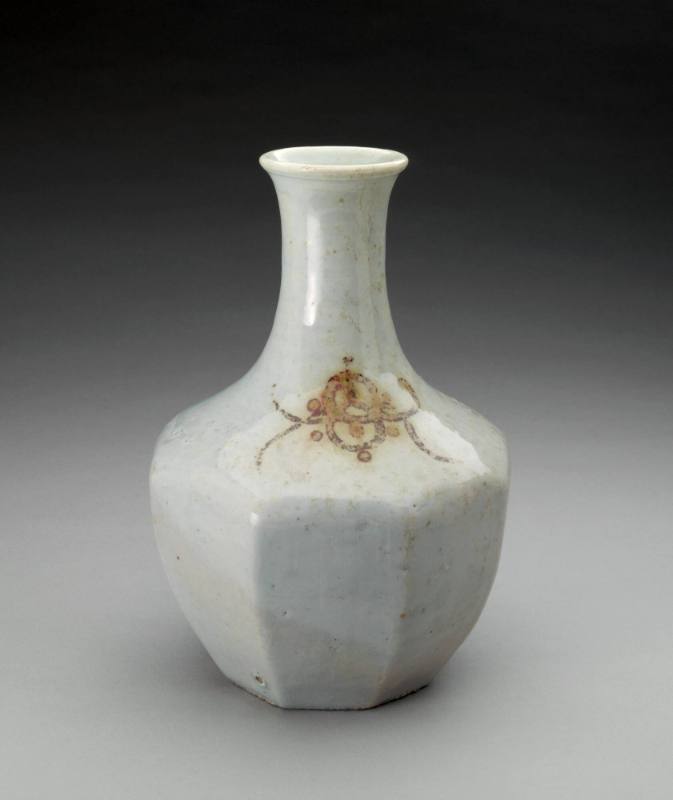

Object Details
Culture
Piartal (Ecuador)
Date
AD 600-1000
Medium
Earthenware
Dimensions
4 3/4 × 7 7/8 inches (12 × 20 cm)
Credit Line
Gift of Thomas Carroll, PhD 1951
Object
Number
2006.070.144
BRIEF DESCRIPTIONThis is a ceramic Piartal bowl with a footed base. This form of bowl is sometimes c(…)
BRIEF DESCRIPTIONThis is a ceramic Piartal bowl with a footed base. This form of bowl is sometimes called a “compotera.”WHERE WAS IT MADE?This was made in the mountainous area of what is now northern Ecuador.HOW WAS IT MADE?This bowl was likely hand-built using the coil method. In this method, a base is made by shaping clay into a flat disc. Then hand formed coils of clay, like ropes, are successively added to one another, building up the walls of the bowl. A tool such as a wooden paddle is used to smooth the sides both inside and out, leaving no trace of the coils. The decoration on the bowl was done with a negative resist-painting technique. The designs you see are actually formed by the absence of decoration, rather than being a positive design as is usual with painted decoration. After a vessel is fired, a waxy, removable substance is painted on where the artist desires his pattern. The vessel is then smeared with a smudgy black organic paint, and the area with the resist is removed, leaving a lighter design showing through the darker background. Resist-painted wares often have faded (or “fugitive”) designs since the dark background color is not as durable as fired slip paints.HOW WAS IT USED?We do not know for sure how this bowl was used. Except for contact-period ceramics and for some grave goods, it is very difficult to determine who used any given piece of pottery, and under what circumstances. Were some vessels reserved for special guests, or for use by high-status elders? Were they used during special religious ceremonies or rituals? Was their use avoided by certain classes of people, such as children and/or menstruating women? As we venture farther back into the past, answering such questions becomes increasingly difficult. Although it is tempting to draw on information from modern traditional societies and from contact-period chronicles, inferences drawn from such sources must be used with care.WHY DOES IT LOOK LIKE THIS?Notice the geometric decorations on the bowl; the interior of the bowl has a sunburst design in dark brown on cream, while the exterior has red and brown designs on a light orange slip ground. We do not know whether or not the designs had any significance to the people who made and used the bowl.ABOUT THE PIARTAL CULTURE:The Piartal culture occupied a mountainous region located in the valleys of the rivers Chota and Carchi, between what is now northern Ecuador (Carchi Province) and southern Colombia. Remains of both the Capulí and Tuza cultures are found in the same region, but the relationship and chronology of these three distinct traditions remains controversial. Piartal and Capulí share many characteristics of ceramic technology, especially the intensive use of black-on-red resist-painted decoration. Face-neck jars are common Piartal pottery forms, as are the shell-shaped ocarinas.












